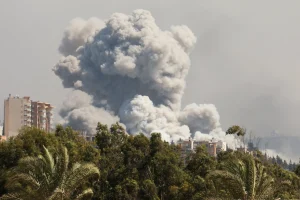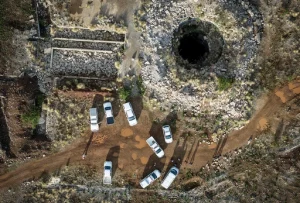The death toll from floods in Cameroon’s capital reached 27 on Monday, with more than 50 injured, as rescuers intensified the search for those missing following the deluge the previous day.
The rains unleashed floodwaters in the district of Yaoundé 2 of the country’s capital on Sunday, sweeping away buildings and reducing many to rubble.
One of the victims mentioned that some bodies have traveled a long way and have been found more than 100 meters from their homes.
The bodies of the victims have been laid out at a morgue, while the injured were rushed to hospitals. The Yaounde General Hospital said it received 12 injuries, including a 7-year-old girl.
Urbanism Minister Celestine Ketcha Courtes, who visited the site, called on residents to follow the instructions of local authorities.
Torrential rain during the night of Sunday (Oct. 8) to Monday (Oct. 9) triggered a landslide which destroyed parts of the Mbankolo neighborhood, around 25 km from Yaoundé.
Flooding has been frequent in Cameroon in recent years, with experts often blaming climate change, and its impact has been exacerbated by shoddy construction that often circumvents regulations.
The latest floods were worsened after a dike in a man-made lake gave way, sweeping structures down the hill, the government said.
Mudslides during the rainy season are frequent in Yaoundé, a hilly city where sometimes precarious dwellings are built.
Authorities in Cameroon have been demolishing houses in high-risk zones susceptible to floods and landslides. Many of the buildings that collapsed on Sunday had been marked for demolition.
On Saturday, authorities in neighboring Nigeria warned residents to expect floods in nine states as Cameroon began releasing water from its Lagdo Dam.
It is expected to do this until the end of this month, Nigeria’s National Emergency Management Agency (NEMA) said, adding that Cameroon’s dam was expected to spill water until the end of October.
Cameroon says the release of water is necessary due to heavy rains in the country’s north.
The release would be kept to a minimum, officials added.
Last year, the release of water from the dam caused flooding and fatalities in Nigeria, especially in Benue state, on the border with Cameroon.














